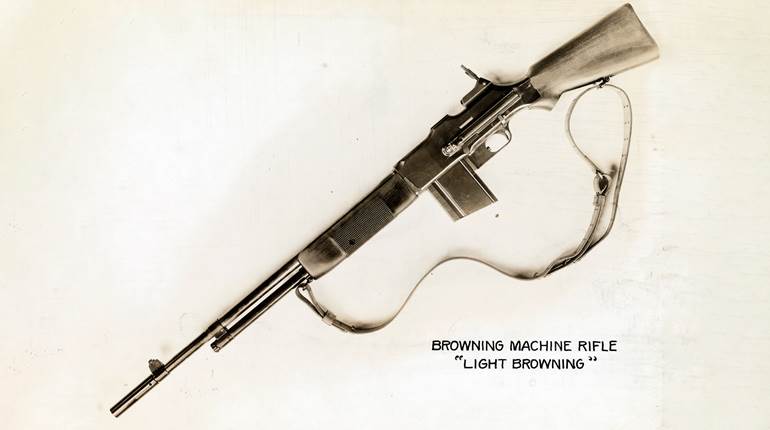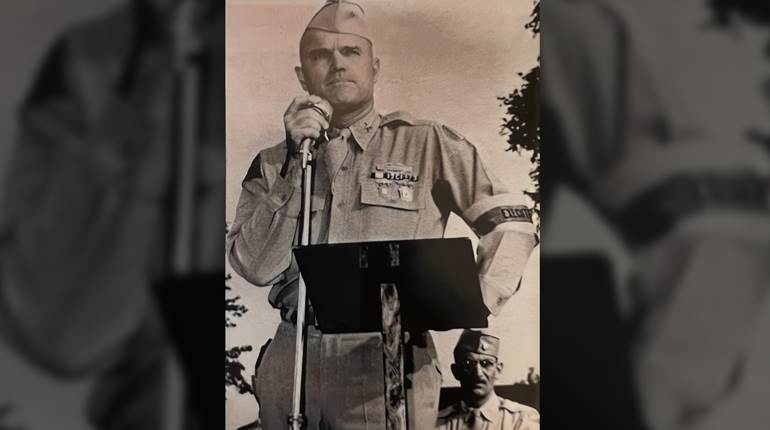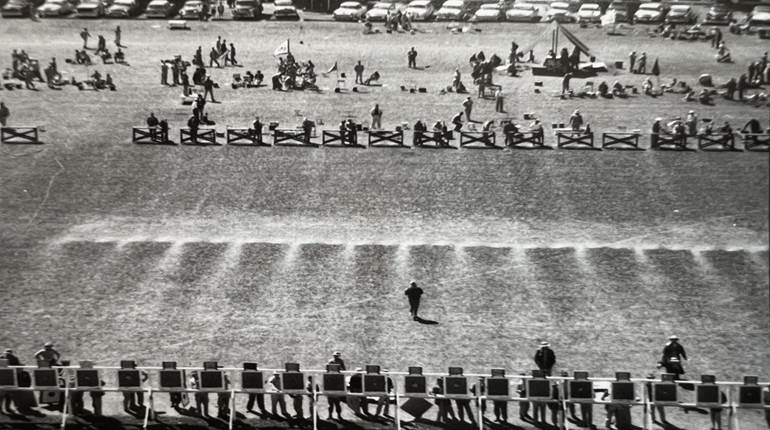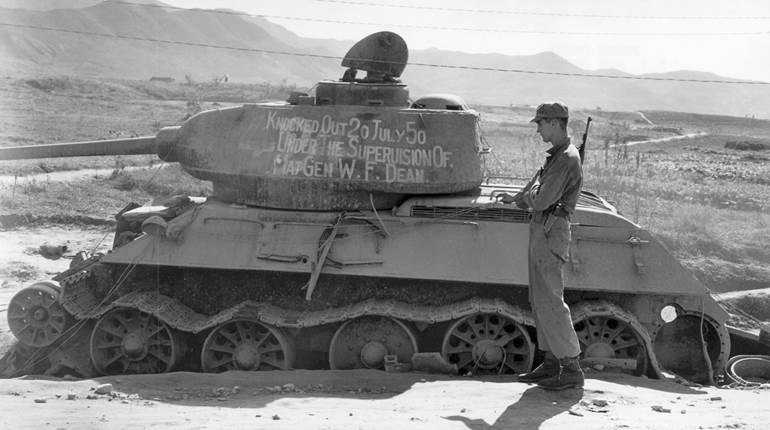
When the North Korean People‘s Army crossed the 38th Parallel on June 25, 1950, it took the Western world by surprise. Backed by T-34 tanks, the North Korean People's Army rapidly overwhelmed and overran the Republic of Korea (ROK) forces. The Republic of Korea forces had no tanks or heavy weapons for political reasons.

Following a United Nations Security Council resolution, American troops, primarily from the 24th Infantry Division, were flown into Korea and engaged in combat against the North Koreans by July 1950.
Those first American troops had been on garrison duty in Japan, and they included my father-in-law, Joe Kocik. They did not have the arms and equipment to hold against the North Koreans. Seoul was lost.

They and the remnants of the ROK army were forced into a perimeter south to a peninsula that came to be known as the Pusan Perimeter.
The small arms used by the Americans in the early battles of the Korean War, including in Gen. Douglas MacArthur’s brilliant landing at Inchon in September 1950, were the same guns used to win World War II against Nazi Germany and Imperial Japan.

As the Marines landed at Inchon and the Eighth Army, including the 1st Cavalry Division, attacked out of the Pusan Perimeter, it resulted in the near destruction of the North Korean People’s Army.
The war took a turn when Chinese communist forces came across the Yalu River from in October 1950, pushing United Nations forces back into South Korea.

The standard service rifle for American troops during the Korean War was the “U.S. Rifle, Caliber .30, M1,” better-known as the M1 Garand. Due to the rapid mobilization of the Army and Marine Corps, guns were pulled out of storage, stripped of their cosmoline and put back into the hands of American troops.
Because of the demand created by the Korean War, M1 Garand production had to be ramped up at Springfield, Harrington & Richardson and International Harvester, creating a collection of M1s known as the "Post-WWII Garands."

A firearm that has become iconic in the imagery of the Korean War is the “U.S. Carbine, Caliber .30, M2.” Although semi-automatic-only M1 Carbines were issued during the war, the M2 Carbine, as manufactured by Inland Division of General Motors and Winchester, included conversion parts that allowed for select-fire operation.
In addition to purpose-built M2 Carbines, many M1 Carbines were upgraded to a select-fire configuration, like this known example used by Medal of Honor recipient Alford L. McLaughlin. These lightweight, compact carbines entered the battlefields of Korea, where they offered much more firepower in their select-fire configuration than the semi-auto-only M1 had offered during WWII.

The M2 carbine had gone through a series of upgrades to get to the configuration that is well-known during the Korean War, which included a barrel band with a bayonet lug, round bolt, low wood, a flip safety and a fully adjustable rear sight.
Perhaps most iconic of the M2 Carbine is the 30-round detachable magazine, with its distinct banana curve, which was no doubt appreciated, due the M2’s high cyclic rate and the limited capacity of the 15-round magazines that were primary issue for almost all of WWII.

The Model of 1918 Browning Automatic Rifle, which had been heavily modified by the U.S. Ordnance Department over the years into its M1918A2 configuration, was the standard squad automatic weapon today.
Designed by John Moses Browning for the United States before World War I, it picked up weight and features from its original role as a “machine rifle.”

The wooden buttstock had been replaced with a synthetic one, guides had been added to the magazine well, the rear sight changed to a simpler design and a bipod was added, as well as a new flash hider.
The fire-control components had been changed to fire at two cyclic rates, “slow“ and “fast." Despite the horrific climate experienced by the troops during the Korean War, the M1918A2 BAR performed well.

Although declared obsolete, the M1928A1, M1 and M1A1 Thompson submachine guns were present, but they had been officially superseded by the M3 “Grease Gun.” There is anecdotal evidence that some Thompsons were taken off Communist dead and put back into service with American combat troops.
It was because of the Korean War that the M3A1 submachine gun went into production at Ithaca. The company is better-known for its shotguns, but it became the only maker of the M3A1 "Grease Gun" during the Korean War.

When it came to machine guns, the U.S. Military used the same guns that won WW II. They included the Browning belt-feds, with the big boy of them all being the Browning .50 BMG M2 air-cooled machine gun, used both on vehicles and on its ground tripod.
There was also much use made of the Browning M1919A4 on its M2 tripod, as well as the M1919A6 with its bipod and buttstock, which entered combat service in 1944.

The water-cooled, tripod-mounted Browning M1917A1 also played a role as perhaps the most ideal machine gun for stopping the human-wave attacks of the North Koreans and, later in 1950, the Chinese People’s Liberation Army.
Its water-cooled configuration meant it could fire continuously for long periods of time without requiring barrel changes, unlike many of the lighter, air-cooled machine guns of the time.

After the Chinese entered the war, perhaps the most grueling task of any Soldier or Marine during the war came in North Korea at places like the Chosin Reservoir, as well as the retreat that followed. You can read about the guns used in the Chosin Reservoir battle here.
It was the most severe test of American troops and their arms. As United Nation’s forces were pushed back out of North Korea and the lines eventually stabilized—despite repeated offensives from both sides—there was considerable use of sniper rifles.

These included both the sniper versions of the M1 Garand rifle, both the M1C and, in more numbers, the M1D, but the Springfield Model of 1903 was also used.
The standard sniping rifle of the WWII U.S. Army was the M1903A4, which was a Model 1903A3 Springfield with a turned-down bolt handle, a Redfield Junior mount and a Weaver scope. The Marine Corps also clung to the Model 1903 during the Korean War, using M1903A1 rifles topped with Unertl scopes.

Among UN forces, British snipers used the excellent Lee-Enfield No. 4 Mk I(T) sniper rifle, Our Australian allies used versions of the Lithgow No. 1, Mark III with Heavy (H) barrels to great effect. You can read the account of one Australian sniper Ian Robertson here, as it demonstrates exactly how effective these rifles were.
Many of the United Nations troops used American arms—including the British use of the Garand—but those from Luxembourg and Belgium brought a new rifle to the battlefield. The Fabrique Nationale FN-49 or ABL, designed by Dieudionne Saive, was the forerunner of the FN FAL, and an excellent rifle in its own right.

For handguns, the Americans relied on the U.S. Model 1911A1 pistol in .45 ACP, although there is evidence of limited use of M1917 and Smith & Wesson Victory revolvers being used as well. When it came to our allies, guns such as the Browning Hi Power and even the Enfield No. 2 revolver in .380/200 were used.
Regardless of the firearms they carried, it was the bravery and determination of our troops and their allies that fought the forces of Communism to a standstill and an armistice that remains in place to this day.
To those veterans of the “Forgotten War,” we salute you. You are not forgotten. We appreciate your service, valor and sacrifice. We remember.
















![Auto[47]](/media/121jogez/auto-47.jpg?anchor=center&mode=crop&width=770&height=430&rnd=134090788010670000&quality=60)




















